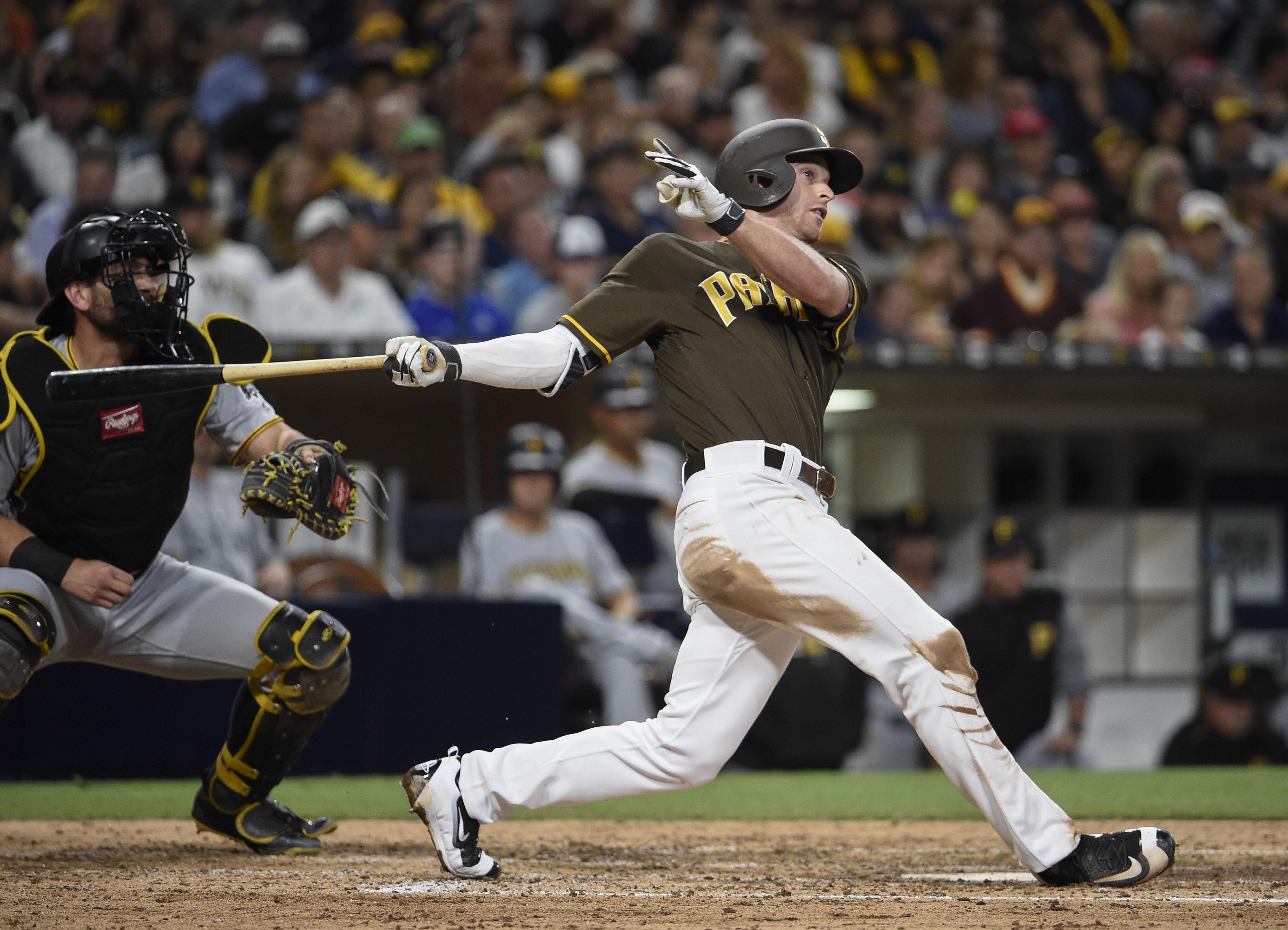How Cory Spangenberg Has Turned Himself Into Possible Trade Bait for Padres


As a whole, Cory Spangenberg‘s season has been pretty average in comparison to other players at his position.
In August, however, he’s really picked things up. The 27-year-old is getting on base at a 0.462 clip with a 180 wRC+. On average, major league hitters have a wRC+ mark of 100, to give you an idea of how well Spangenberg has been hitting over the last twenty-or-so games.
With highly-touted second base prospect Luis Urias waiting in the wings at Triple-A El Paso, it’s only going to be more difficult for the Padres to find playing time for their second basemen. If Spangenberg can continue hitting this well, he could be trade bait for general manager A.J. Preller.
How exactly has he gotten better this month, though?
To start, let’s look at where his batted ball locations improved in August.
Below is a graphic that shows where Spangenberg hit the ball during this season prior to the start of August, followed by the same data during this month:

This is the most significant change in his batted ball profile, that has helped him improve as much as he has lately. By spraying the ball more often on contact, he is making it more difficult for defenses to shift on him when he’s at the plate. It also means he’s hitting more pitches where they’re thrown, which also helps improve his plate coverage. Hitting to all fields, as he’s recently done, shows that he’s looking like a more mature hitter. There are other ways in which he’s improved though, too.
There’s legitimate evidence that Spangenberg has improved his plate discipline during the month of August, as we can see in this table:
| Dates | O-Swing% | Z-Swing% | O-Contact% | Z-Contact% | Zone% | SwStr% |
| 3/29-7/31 2018 | 34.9% | 68.6% | 57.1% | 81.2% | 43.6% | 14.1% |
| 8/01-8/21 2018 | 25.2% | 54.4 % | 63.6 % | 77.6 % | 40.7 % | 10.4 % |
We clearly are seeing an improvement in Spangenberg’s ability to pick out the right pitches to hit recently. He’s nearly reduced his outside swing rate by ten percent, while taking over fourteen percent more pitches in the strike zone. He hasn’t gotten better at making contact in the zone, but it hasn’t mattered because he’s hitting the right pitches often enough now. He’s also whiffing much less on all of the pitches he’s seeing, so Spangenberg has improved drastically despite his lower zone contact percentage. Similarly to the way Hunter Renfroe has adjusted recently, Spangenberg’s improved his ability to punish more specific pitches that he’s best at hitting.
Already we’ve seen how Spangenberg started using the whole field more often when he hits, but he’s also hitting more of the right pitches in the zone. Let’s look at the Stactast data on pitches he’s made contact with for base hits, before and after August during this season:

The second zone we’re seeing, is the August heat map of pitches Spangenberg has made contact with for hits. The biggest takeaway here, is that Spangenberg’s swing is probably best suited to go the opposite field more often than he’s previously realized or helped himself be able to accomplish. So we have three distinct pieces of evidence to suggest that Spangenberg has really improved himself. He ranks as 58th fastest by Statcast’s sprint speed leaderboard, so he’s a player that can be dangerous on the bases if he gets on often enough. Who might want to trade for him?
A team like the Nationals may be perfect for Spangenberg. They’re maybe looking at taking a step back payroll-wise, so Spangenberg could be a good option as a player who’s controllable through the 2020 season. The team’s current options at the position are limited after they let the Cubs claim Daniel Murphy on waivers this week.
Another squad that may be searching for help at the keystone position is the Red Sox. Despite their powerhouse position in the league at the moment, the team has received hardly any production from the second base position in 2018. Consider that the team already has a high payroll and may be looking for a cheap upgrade at the position.
The point is that the Padres have a much-improved second baseman in Spangenberg, yet have a better replacement in Luis Urias waiting to take over at the position. So the team would do well to get what they can for Spangenberg now, and add some depth in the pitching staff, for example. A trade including the second baseman should fetch a return similar to what the Phillies received for Freddy Galvis, so the Padres could target a similarly interesting pitcher from the upper levels of another team’s minor league system. The evidence suggests that Spangenberg’s adjustments may be real, so trading him this winter may be the best choice because his value will likely be peaking then. As long as Spangenberg can maintain a high level of play through the rest of the season, the Padres will have a useful trade chip on their hands this winter.
A sophomore at Willamette University in Oregon, Conrad is majoring in Spanish but is also a writing center assistant for other students at Willamette. He has been a Padres die-hard his whole life and hopes to bring comprehensible statistical analysis to the site.
If the point is that a player on a hot streak might be a bit more tradeable, okay. But of course Spangenberg is not suddenly a .462 OBP hitter, otherwise we’d keep him and bat him leadoff. He is a former first round pick who has had many chances (1100 ABs) and is no better than a fringe, utility type. If some other team wants him, they can have him, though we shouldn’t expect much in return – there’s actually a chance he gets non-tendered this off season.